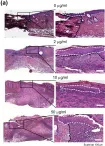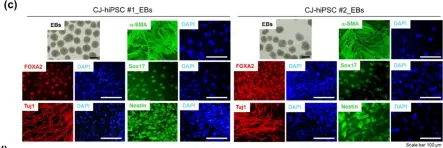Extracellular ATP binds to purinergic receptors and promotes inflammatory responses. We tested whether oxidized ATP (oATP), P2X7 receptor antagonist can attenuate acute kidney allograft rejection.
Brown Norway kidney allografts were transplanted into Lewis recipients. Three groups were defined: oATP (n=8), cyclosporine A (n=6), and no treatment (n=8). On day 7, we assessed kidney allograft survival, function, and rejection characteristics. We further determined T-cell, B-cell, and macrophage response to oATP in vivo and in vitro and examined intragraft inflammatory gene transcripts.
Kaplan-Meier survival analyses demonstrated significantly better graft survival rates in oATP and CsA groups compared with no treatment (P<0.05). Similarly, serum creatinine (Scr) and BUN levels were significantly lower in oATP and CsA groups (P<0.05). oATP reduced both T cell-mediated rejection and antibody-mediated rejection, inhibited B-cell and T-cell activation, and downregulated intragraft IL-6 mRNA levels (P<0.0001). In vitro, oATP prevented proliferation in mixed lymphocyte reaction assays, and inhibited macrophage P2X7R activity in a dose-dependent manner.
Our findings suggest that oATP mitigates kidney allograft rejection by inhibiting T-cell, B-cell, and macrophage activity and indicate a potential role for the purinergic system and oATP in solid organ transplantation.
Copyright © 2020 by the American Society of Nephrology.
Product Citations: 4
In Kidney360 on 27 February 2020 by Ding, X., Wilson, N. A., et al.
-
Immunology and Microbiology
In Journal of Clinical Medicine on 20 November 2018 by Jeon, H., Kim, J. Y., et al.
Small molecules that improve reprogramming, stem cell properties, and regeneration can be widely applied in regenerative medicine. Natural plant extracts represent an abundant and valuable source of bioactive small molecules for drug discovery. Natural products themselves or direct derivatives of them have continued to provide small molecules that have entered clinical trials, such as anticancer and antimicrobial drugs. Here, we tested 3695 extracts from native plants to examine whether they can improve induced pluripotent stem cell (iPSC) generation using genetically homogeneous secondary mouse embryonic fibroblasts (MEFs) harboring doxycycline (dox)-inducible reprograming transgenes. Among the tested extracts, extracts from the fruit and stem of Camellia japonica (CJ) enhanced mouse and human iPSC generation and promoted efficient wound healing in an in vivo mouse wound model. CJ is one of the best-known species of the genus Camellia that belongs to the Theaceae family. Our findings identified the natural plant extracts from the fruit and stem of CJ as novel regulators capable of enhancing cellular reprogramming and wound healing, providing a useful supplement in the development of a more efficient and safer method to produce clinical-grade iPSCs and therapeutics.
-
ICC
-
Mus musculus (House mouse)
-
Plant Science
-
Stem Cells and Developmental Biology
In Oncology Letters on 1 February 2018 by Wang, Y., Liu, Y., et al.
The existence of cancer stem cells (CSCs) or cancer stem-like cells (CSLCs) is regarded as the cause of tumor formation and recurrence. Matrine has been reported to exhibit antitumor effects in cancer cells. In the present study, a preliminary study was performed on the mechanisms of matrine on hepatocellular carcinoma (HCC) stem-like cells. The HCC SMMC-7721 cell line was cultured in tumor stem cell-specific medium to form spheres, and different concentrations (1, 2 and 5 mg/kg) of cisplatin were then used in order to purify the most drug-resistant cells, which were used as CSLCs. An MTT assay was performed to detect the inhibitory effects of matrine against CSLC proliferation. Quantitative polymerase chain reaction (qPCR) and western blot analysis were used to detect changes in cell adhesion regulating gene (CAR), E-cadherin, laminin and fibronectin. As a result, using tryptose sulfite cycloserine medium culture and cisplatin-resistance screening, CSLCs were successfully isolated from the SMMC-7721 cell line. Matrine inhibited the proliferation of CSLCs in vitro. The results of qPCR and western blot analysis demonstrated that matrine upregulated the expression of CAR, E-cadherin, laminin and fibronectin in CSLCs compared with the control treatment. A certain concentration of matrine exhibited antitumor effects on HCC stem like cells.
-
Cancer Research
In The Journal of Immunology on 15 February 2013 by Ding, B. B., Bi, E., et al.
After undergoing Ig somatic hypermutation and Ag selection, germinal center (GC) B cells terminally differentiate into either memory or plasma cells (PCs). It is known that the CD40L and IL-21/STAT3 signaling pathways play critical roles in this process, yet it is unclear how the B cell transcription program interprets and integrates these two types of T cell-derived signals. In this study, we characterized the role of STAT3 in the GC-associated PC differentiation using purified human tonsillar GC B cells and a GC B cell-like cell line. When primary GC B cells were cultured under PC differentiation condition, STAT3 inhibition by AG490 prevented the transition from GC centrocytes to preplasmablast, suggesting that STAT3 is required for the initiation of PC development. In a GC B cell-like human B cell line, although IL-21 alone can induce low-level Blimp-1 expression, maximum Blimp-1 upregulation and optimal PC differentiation required both IL-21 and CD40L. CD40L, although having no effect on Blimp-1 as a single agent, greatly augmented the amplitude and duration of IL-21-triggered Jak-STAT3 signaling. In the human PRDM1 locus, CD40L treatment enhanced the ability of STAT3 to upregulate Blimp-1 by removing BCL6, a potent inhibitor of Blimp-1 expression, from a shared BCL6/STAT3 site in intron 3. Thus, IL-21 and CD40L collaborate through at least two distinct mechanisms to synergistically promote Blimp-1 activation and PC differentiation.
-
MACS
-
Homo sapiens (Human)
-
Immunology and Microbiology
In J Clin Med on 20 November 2018 by Jeon, H., Kim, J. Y., et al.
Fig.6.A

-
ICC
-
Mus musculus (House mouse)
Collected and cropped from J Clin Med by CiteAb, provided under a CC-BY license
Image 1 of 2
In J Clin Med on 20 November 2018 by Jeon, H., Kim, J. Y., et al.
Fig.4.C

-
ICC
-
Mus musculus (House mouse)
Collected and cropped from J Clin Med by CiteAb, provided under a CC-BY license
Image 1 of 2

